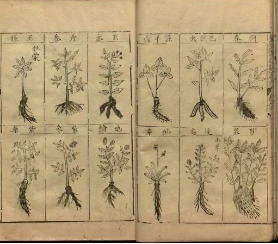《本草纲目》:东方医学巨著

The Compendium of Materia Medica was published in the 24th year of Wanli (1596) during the Ming Dynasty in China. This book is considered a masterpiece in medicine, contributing significantly to human survival and development, health, and happiness.
To ensure accuracy and reliability, its author, Li Shizhen (1518-1593), personally inspected, traveled thousands of miles, read extensively, corrected errors, and referenced over 800 ancient books. The book includes 1892 kinds of medicines, with more than 1,000 illustrations and 10,000 prescriptions. After its publication, it was translated into many languages including Latin, Japanese, French, German, Italian, English, Russian, Korean, and more. Darwin even called it the “Encyclopedia of Ancient China”. In 2011, it was selected into the Memory of the World Register.
Since ancient times, many drugs have been used to treat diseases, including plants, animals, and minerals. The roots and grasses were the most commonly used plant materials. In ancient Chinese, “Ben” meant “Root”, so “Bencao” represented herb medicine. “Gang” referred to the main rope of a fishing net, and “Mu” was the mesh (网眼). Grasping the main rope controlled the mesh. Thus, “Gang Ju Mu Zhang” described grasping key points and being organized. This concept was applied to book writing, forming the “Outline Style”. The structure sets up a general outline or category and detailed items under each outline. So, “Compendium of Materia Medica” literally means a drug book written in an outline style. Since items always follow the outline, it’s called “Bencao Gangmu” in Chinese, or “Compendium of Materia Medica” in English.
There are 52 volumes in the Compendium of Materia Medica. The first two volumes explained the properties, principles, and usage methods of medicines. They combined theories from Shennong’s Classic of Material Medica (Shennong Bencao Jing) with views from various scholars and later developments. The next two volumes listed diseases as main topics and used dialectical medicine for each item. Medicines were grouped by their properties and uses, helping doctors choose the right drugs for specific symptoms. This approach highlighted the importance of tailored treatments. Volumes 5 to 52 introduced 1892 medicinal materials, one by one.
原创编写 版权所有 侵权必究! 每日更新 个性化阅读 英语飙升!